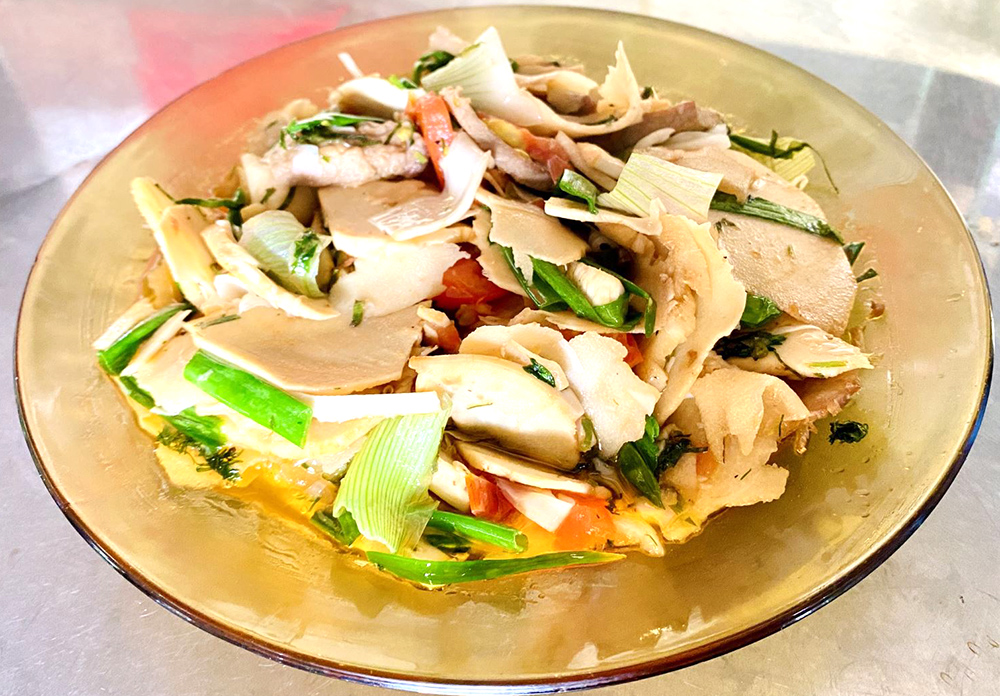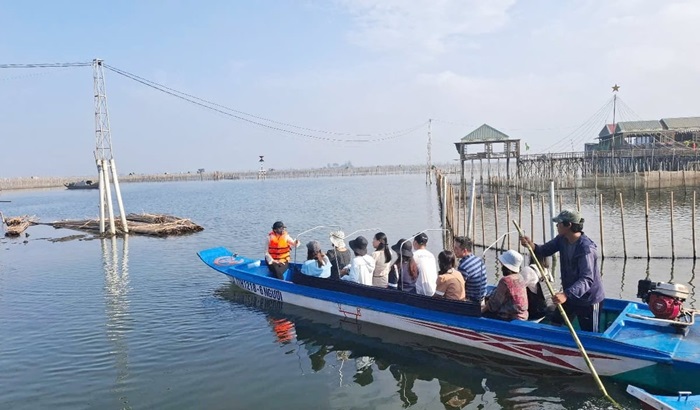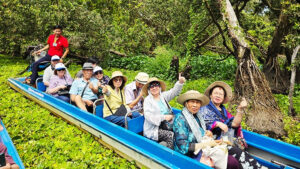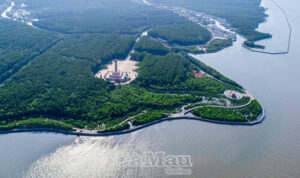The palm tree has long been a tree close to Vietnamese people. It is not only mentioned in poetry, songs, and music, but can also be processed into rustic dishes with morish taste of the hometown.

Among them, the most popular dish is the cooked palm. The ripe palm fruit season begins from mid-September of the lunar calendar and lasts until January of the next year. Therefore, at this time, many households with palm hills have begun to harvest for sale.
The best palm fruits are those from a palm tree that has never been defoliated. Because the fruits growing from trees that have been defoliated is often stunted, with large seeds, acrid taste, losing the characteristic flavor of palm. When buying a palm, you should choose glossy and ripe fruits, the older the palm fruit is, the richer and tastier the taste is.
The way to cook the palm fruits is also quite similar to the way to make the variety of canarium. After washing the palm fruits, you don"t have to pour it into the pot, but wait for the water to boil and then let it cool down about 800 độ C, then put the palm fruits in the pot so that the fruits are evenly submerged in the water. When the palm oil comes out of the fruits, it floats to the surface of the water, clinging to the wall of the pot, it means the palm fruits are ripe.

The delicious palm fruits when cooked has a dark brown color, a lot of floating scum like fat around the pot, squeeze with your hand to feel soft and yellow fruits. When eaten with a little fish sauce or sesame and salt, the more fragrant the palm fruits are. The cooked palm fruits are often processed as a snack food, but for eating with rice, there are dishes such as palm preserved in salt, palm sticky rice or palm core (core in palm tree body) to make salad, fry and braise. In particular, the palm preserved in salt is quite easy to make. After picking, the palm fruits are preliminarily processed, scrubbed to clean the shell, washed with water and dried. Then, divided into two parts, added spices such as salt, sugar, etc. to mix well, wait for about 3-4 hours for soft palm fruits to be eaten. Palm preserved in salt has the salty taste of salt, the greasy taste of the palm, often eaten with rice, which is very delicious.
Not only processing foods with palm fruits, from the trunk of the palm tree, people work hard to cut it, peel off the inner core commonly known as palm core, thinly sliced and processed into foods such as: Mix palm core with dill, spices, peanuts; The palm core is fried with mixed lean and fat pork, green onions, tomatoes or braised foods with bones or meat. To make this food, the hardest part is cutting down the tree and getting the core. In return, the foods from the palm core are crispy, very sweet and fleshy, have many health benefits, are considered a cool and nutritious food, eat once and remember forever. However, because the whole tree has to be cut down to get the palm core, these foods are often not popular, only when the family has a need to change the structure of the crop, trim the trees to open the garden or the palm is too tall to be able to exploit, people cut the palm to get the core.
Along with the eye-catching green color of the palm leaves stretching out in the sun, the foods from the palm seem to attract visitors to the ancestral land. And with only rustic foods but morish taste of the hometown, whether near or far, anyone who has once enjoyed it will remember forever...
Vinh Ha














